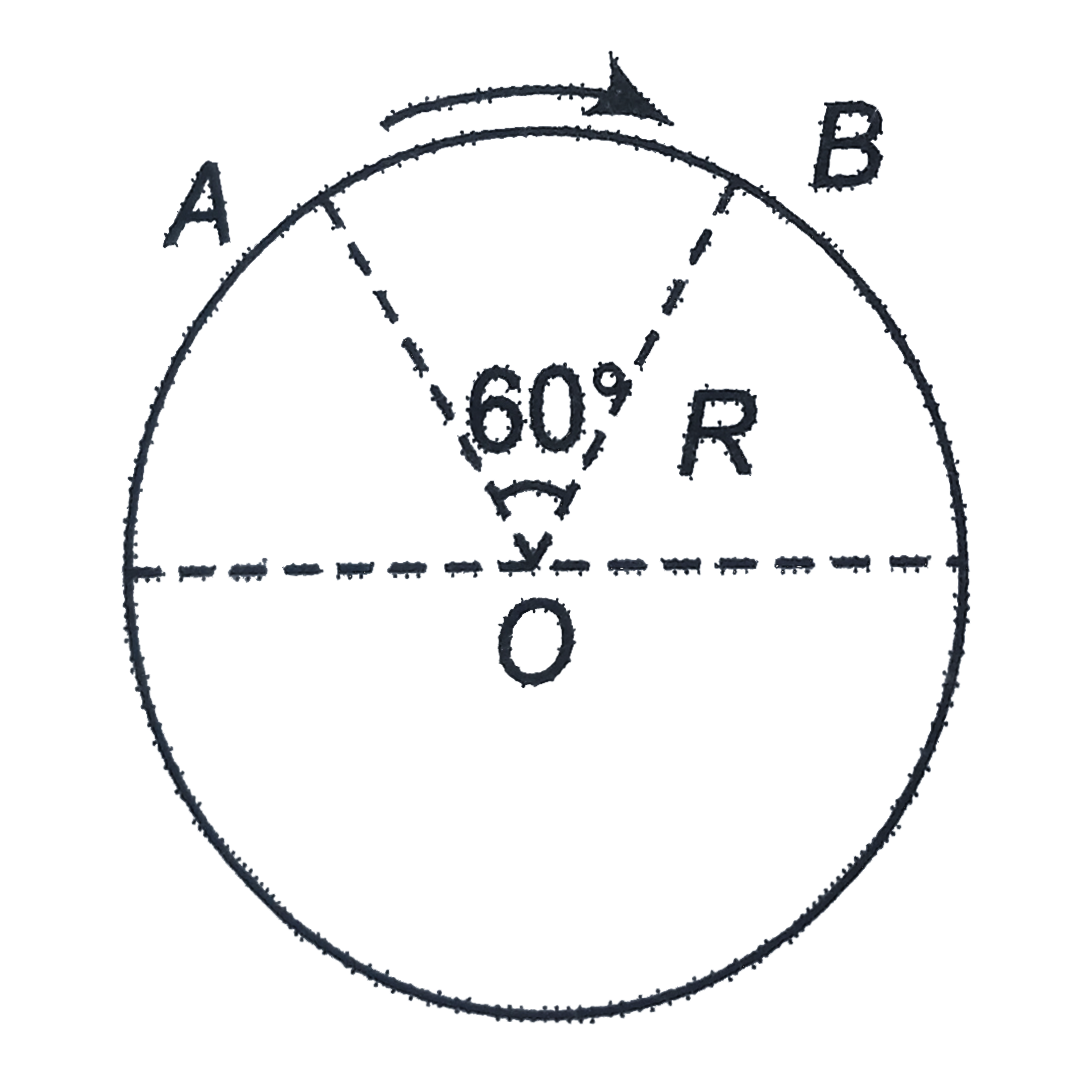A particle move in a semicircular of radius R from O to A . Then it moves parallel to z-axis covering distance R upto B. Finally it moves along BC parallel to y-axis throuth a distance 2R. Find the ratio of D/s.
 .
.
The distance D, that is, length of the actual path covered by time the particle OA'ABC as shown in
 .
.
D= length of the semicircle OA'A+ length
AB+ length BC. This D=πR+R+2R=(π+3)R.
Since OA=2R,AB=R, and BC=2R, the
coorkenates of C can be given as C≡(2R.R2R). Then the position of C is expresed as:
→r=2Rˆj+2Rjatk
As →v(=→OC)=→rc−→r0, Substituting →rc and →r0=0ˆi+0ˆj+0ˆk,
we obtains →s=(2ˆi+ˆj+2ˆk)R.
Its magnitude |→s|=(√22+12+22)R=3R
Hence, Ds=(π+3)R3R=π+33.
Topper's Solved these Questions
- KINEMATICS-1BOOK - CENGAGE PHYSICSCHAPTER - KINEMATICS-1EXERCISE - Solved Examples
9 Videos
- KINEMATICS-1BOOK - CENGAGE PHYSICSCHAPTER - KINEMATICS-1EXERCISE - Exercise 4.1
17 Videos
- GRAVITATIONBOOK - CENGAGE PHYSICSCHAPTER - GRAVITATIONEXERCISE - INTEGER_TYPE
1 Videos
- KINEMATICS-2BOOK - CENGAGE PHYSICSCHAPTER - KINEMATICS-2EXERCISE - Exercise Integer
9 Videos
Similar Questions
Knowledge Check
A particle moves along a semicircular path of radius R in time t with constant speed. For the particle calculate
Adistance travelledBdisplacementCaverage speedDaverage velocityA particle moves along a circular path of radius R. The distance and displacement of a particle after one completer revolution is
A0,2πrB2πr,0C0,πrDπr,0A particle moves along a circular path of radius R. The distance and displacement of a particle after one completer revolution is
A0,2πrB2πr,0C0,πrDπr,0
A particle moves on a circular path of radius 'r'. It completes one revolution in 40s. Calculate distances displacement in 2 min 20 s.
View SolutionA particle moves in a circle of radius R. In half the period of revolution its displacement is …………… and distance covered is …………... .
View SolutionA particle is moving along a circular track of radius r. What is the distance traversed by particle in half revolution ? What is its displacement ?
View SolutionIn Fig. 3.12 a particle moves along a circular parth of radius r. It starts from point A and moves anticlockwise. Find the distance travelled by the particle as it : moves from A to B

View SolutionA particle is moving an a uniform circular motion with radius 'r' Then the distance covered by the particle on one revoution will be
View Solution

